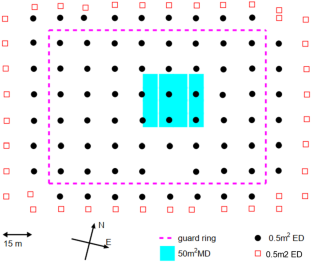杨巴晶混合阵列的时间校准方法研究
IF 1.8
4区 物理与天体物理
Q3 ASTRONOMY & ASTROPHYSICS
引用次数: 0
摘要
羊八井混合阵列(YBJ-HA)位于中国西藏羊八井国际宇宙线观测站。它由115个闪烁探测器(SD)和16个地下水切伦科夫μ介子探测器(MDA)组成。它的主要物理目标是观测100 TeV能量区的(γ)射线源,因此阵列必须具有非常好的指向精度。要实现这一性能,闪烁探测器的时间响应必须具有很高的一致性。本文介绍了一种特征平面法(离线校准法)来校准每个闪烁探测器的时间,并利用月影分析结果来检验时间校准的准确性。本文章由计算机程序翻译,如有差异,请以英文原文为准。

Study on the time calibration method of the YangBaJing Hybrid Array
The YangBaJing Hybrid Array (YBJ-HA) is located at the Yangbajing international cosmic ray observatory, Tibet, China. It consists of 115 scintillation detectors (SDs) and 16 underground water Cherenkov muon detectors (MDA). Its main physical goal is to observe the \(\gamma \)-ray sources in the 100 TeV energy region, so the array must have very good pointing accuracy. To achieve this performance, the time response of the scintillator detectors must have high consistency. This paper introduces a characteristic plane method (offline calibration method) to calibrate the time of each scintillator detector and uses the moon shadow analysis results to test the time calibration accuracy.
求助全文
通过发布文献求助,成功后即可免费获取论文全文。
去求助
来源期刊

Astrophysics and Space Science
地学天文-天文与天体物理
CiteScore
3.40
自引率
5.30%
发文量
106
审稿时长
2-4 weeks
期刊介绍:
Astrophysics and Space Science publishes original contributions and invited reviews covering the entire range of astronomy, astrophysics, astrophysical cosmology, planetary and space science and the astrophysical aspects of astrobiology. This includes both observational and theoretical research, the techniques of astronomical instrumentation and data analysis and astronomical space instrumentation. We particularly welcome papers in the general fields of high-energy astrophysics, astrophysical and astrochemical studies of the interstellar medium including star formation, planetary astrophysics, the formation and evolution of galaxies and the evolution of large scale structure in the Universe. Papers in mathematical physics or in general relativity which do not establish clear astrophysical applications will no longer be considered.
The journal also publishes topically selected special issues in research fields of particular scientific interest. These consist of both invited reviews and original research papers. Conference proceedings will not be considered. All papers published in the journal are subject to thorough and strict peer-reviewing.
Astrophysics and Space Science features short publication times after acceptance and colour printing free of charge.
 求助内容:
求助内容: 应助结果提醒方式:
应助结果提醒方式:


